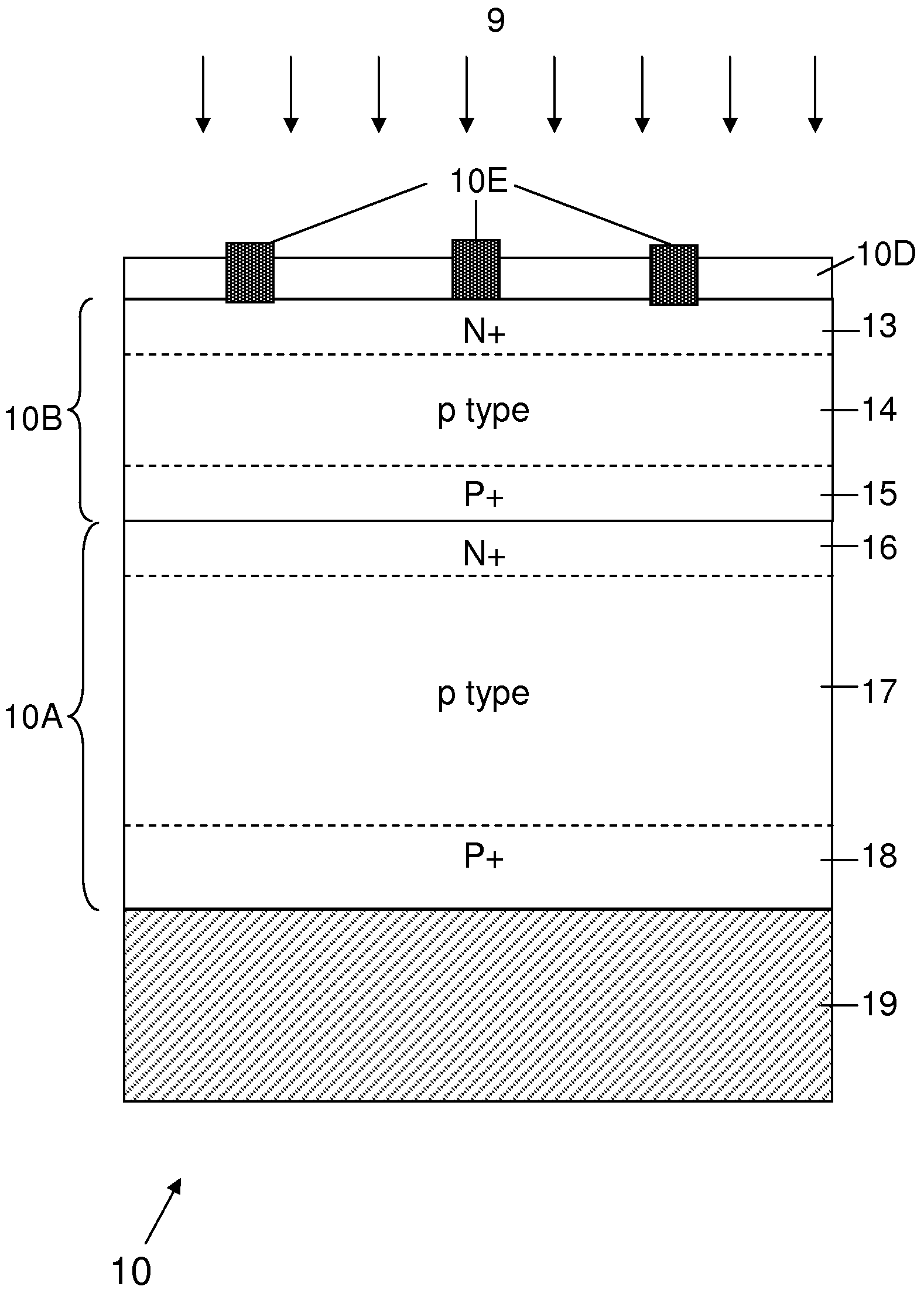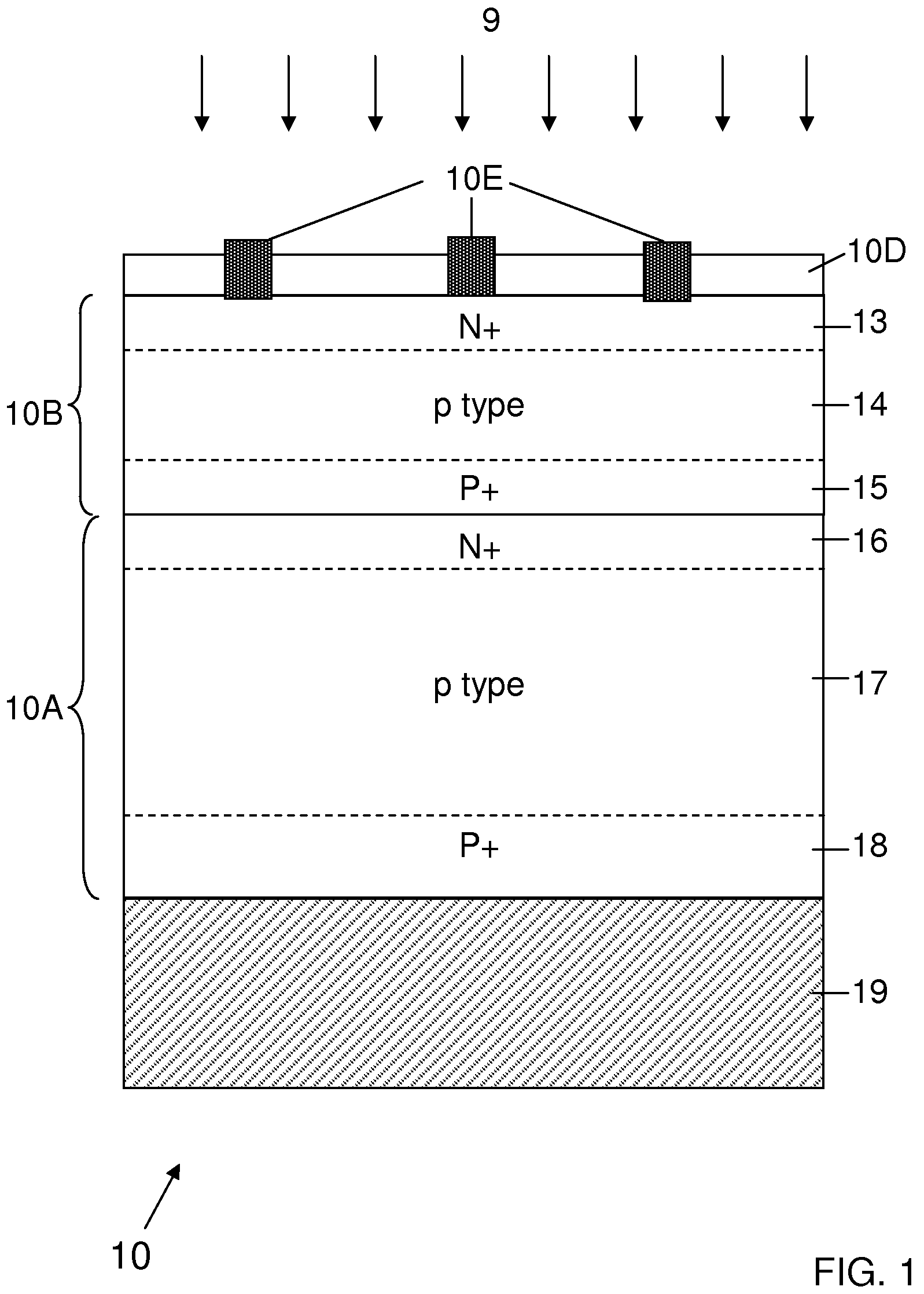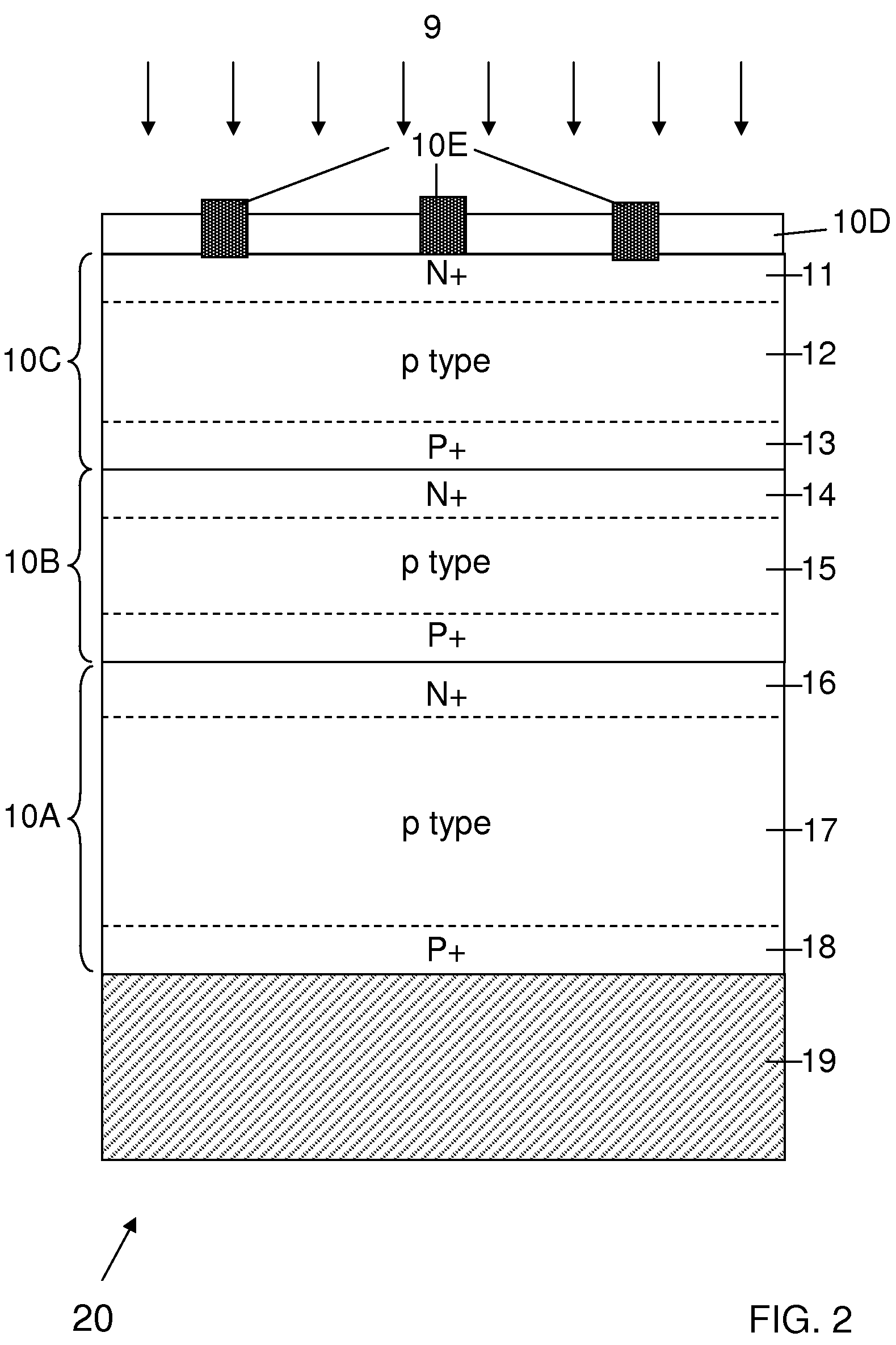Tandem nanofilm solar cells joined by wafer bonding
a solar cell and nano-film technology, applied in nanotechnology, pv power plants, semiconductor devices, etc., can solve the problems of reducing yield, reducing efficiency, and increasing costs, so as to optimize the structure of tandem photovoltaic cells, reduce costs, and yield. high
- Summary
- Abstract
- Description
- Claims
- Application Information
AI Technical Summary
Benefits of technology
Problems solved by technology
Method used
Image
Examples
Embodiment Construction
[0029]In FIG. 1, a tandem, multijunction, photovoltaic energy conversion device 10 consisting of two separate, stacked, photovoltaic cells 10A and 10B composed of semiconductor materials and illuminated by radiant energy, e.g. sunlight 9. The lower photovoltaic cell 10A comprises a semiconductor wafer composed of material #1 which contains an N+ doped region 16, a p-type doped region 17, and a P+ doped region 18, is mounted on a substrate 19 using suitable means, such as alloying, adhesive, or bonding. The substrate 19 is composed of a material such as silicon, glass, quartz, silica, alumina, ceramic, metal, graphite, and plastic. The upper photovoltaic cell 10B comprises a semiconductor wafer which is made using a material #2 with a higher bandgap than the material #1 used to make photovoltaic cell 10A, consists of an N+ doped region 13, a P-type doped region 14, and a P+ doped region 15; and the upper photovoltaic cell 10B is mounted to the lower photovoltaic cell 10A using wafer ...
PUM
 Login to View More
Login to View More Abstract
Description
Claims
Application Information
 Login to View More
Login to View More - R&D
- Intellectual Property
- Life Sciences
- Materials
- Tech Scout
- Unparalleled Data Quality
- Higher Quality Content
- 60% Fewer Hallucinations
Browse by: Latest US Patents, China's latest patents, Technical Efficacy Thesaurus, Application Domain, Technology Topic, Popular Technical Reports.
© 2025 PatSnap. All rights reserved.Legal|Privacy policy|Modern Slavery Act Transparency Statement|Sitemap|About US| Contact US: help@patsnap.com



